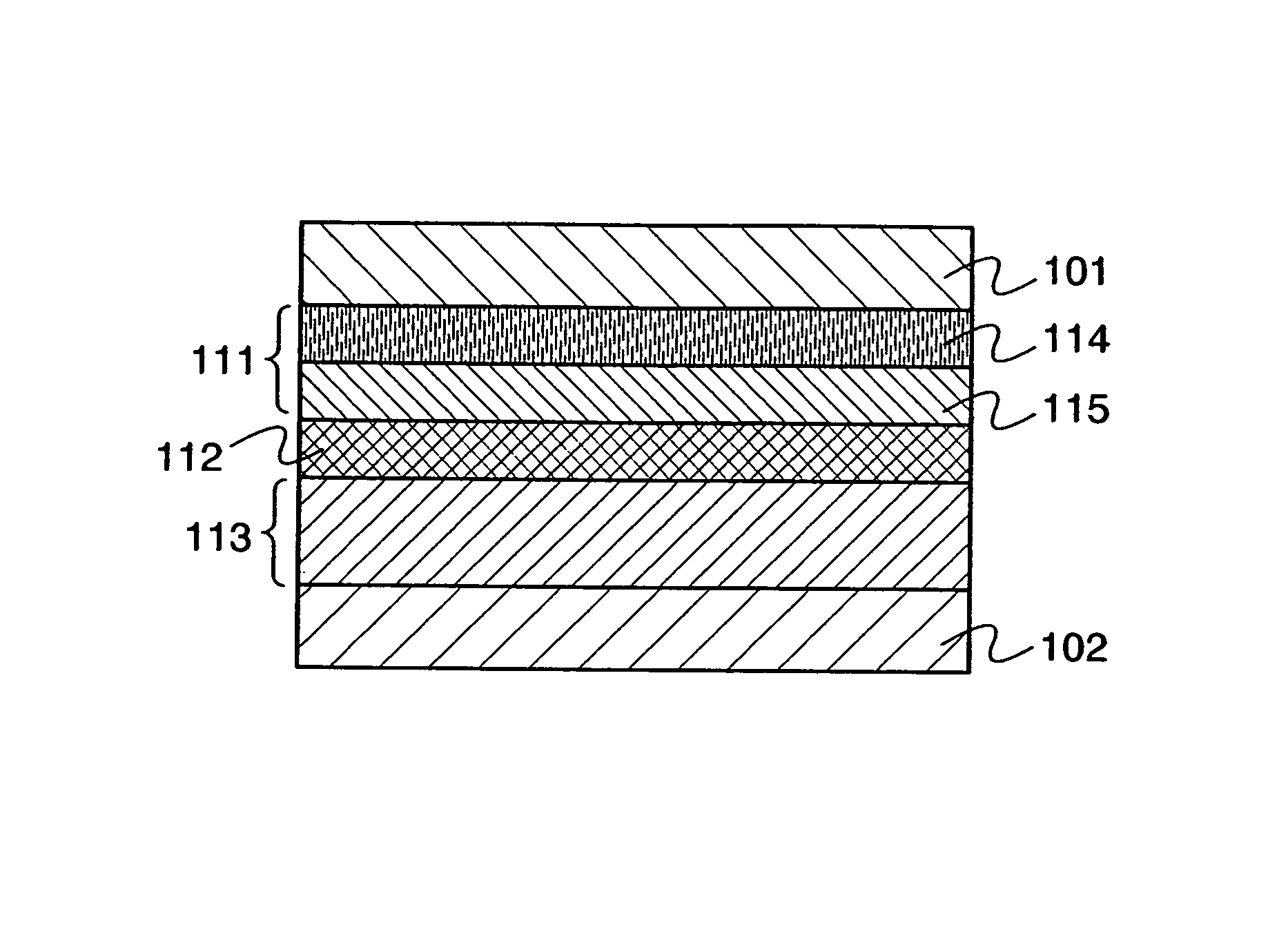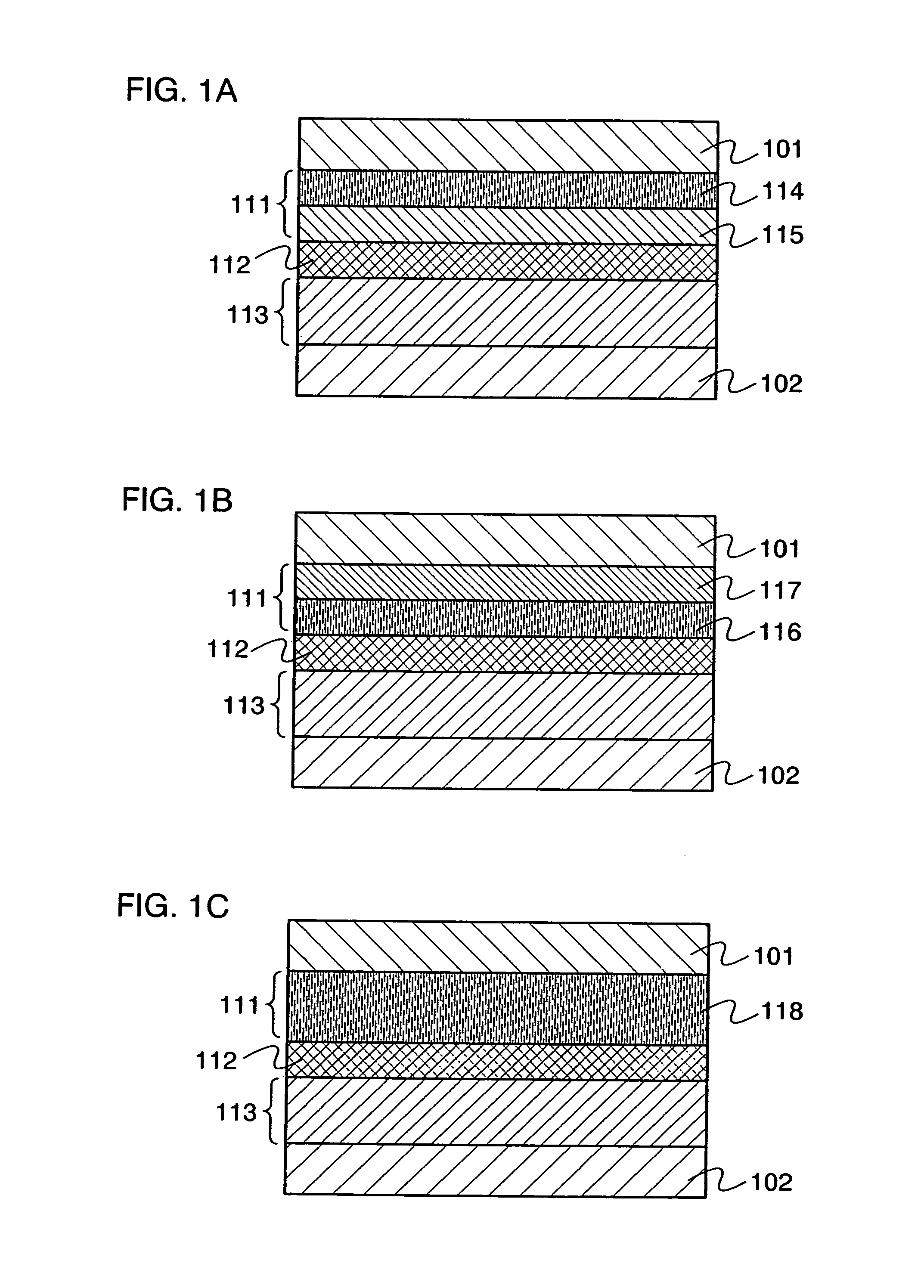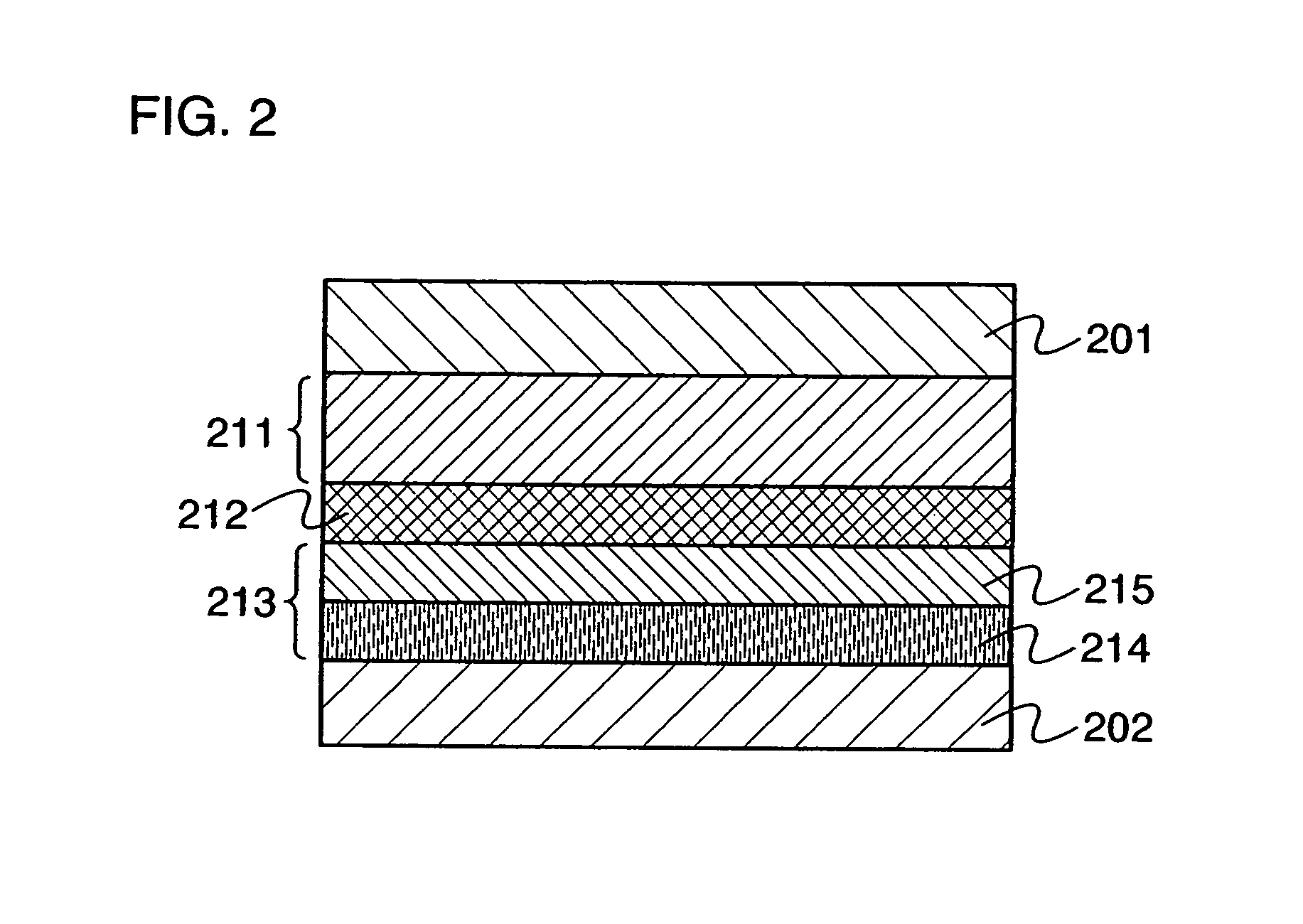Light emitting element and electronic device using the same
a technology electronic devices, applied in the field can solve the problems of high reliability of light emitting elements, drive voltage rise, drive voltage rise, etc., and achieve the effects of low power consumption, low hole injection barrier, and high conductivity
- Summary
- Abstract
- Description
- Claims
- Application Information
AI Technical Summary
Benefits of technology
Problems solved by technology
Method used
Image
Examples
embodiment 1
[0049]One mode of a light emitting element of the present invention is explained with reference to FIGS. 1A to 1C.
[0050]FIGS. 1A to 1C show a light emitting element including a first layer 111 which is in contact with a first electrode 101, a second layer 112 which is in contact with the first layer 111, and a third layer 113 which is in contact with the second layer 112 and a second electrode 102 between the first electrode 101 and the second electrode 102. In FIGS. 1A to 1C, light is emitted when voltage is applied to the electrode so that an electric potential of the first electrode 101 is higher than an electric potential of the second electrode 102. The second layer 112 is a light emitting layer, and the third layer 113 is a layer having a function of transporting or injecting an electron to the light emitting layer which is the second layer.
[0051]The second layer 112 contains a light emitting substance. The second layer 112 may be a layer formed from only a light emitting subs...
embodiment 2
[0069]This embodiment is explained with reference to FIG. 2.
[0070]FIG. 2 shows a light emitting element including a first layer 211 which is in contact with a first electrode 201, a second layer 212 which is in contact with the first layer 211, and a third layer 213 which is in contact with the second layer 212 and a second electrode 202 between the first electrode 201 and the second electrode 202. The light emitting element in FIG. 2 emits light when voltage is applied so that an electric potential of the first electrode 201 is higher than an electric potential of the second electrode 202. The second layer 212 is a light emitting layer and the first layer 211 is a layer having a function of transporting or injecting a hole to the light emitting layer which is the second layer. The first layer may have a hole injecting layer or a hole transport layer. A material illustrated in Embodiment 1 can be used as a light emitting material, a material for the first electrode and the second el...
embodiment 3
[0077]In this embodiment, a multilayer structure between a second layer 112 and a first electrode 101 shown in Embodiment 1 and a multilayer structure between a second layer 212 and a second electrode 202 shown in Embodiment 2 are combined.
[0078]In this case, a composite layer is arranged between a first electrode and a light emitting layer and between a second electrode and the light emitting layer; accordingly, a light emitting element having higher conductivity and having a high hole injecting property or a high hole transporting property can be provided. In other words, a light emitting element having an advantage of Embodiment 1 and an advantage of Embodiment 2 is obtained.
[0079]FIGS. 3A to 3C show a light emitting element which is one mode of this embodiment. In FIGS. 3A to 3C, a second layer 312 which is a light emitting layer is arranged between a first electrode 301 and a second electrode 302, which are a pair of electrode; a first layer 311, between the first electrode 301...
PUM
| Property | Measurement | Unit |
|---|---|---|
| molar ratio | aaaaa | aaaaa |
| molar ratio | aaaaa | aaaaa |
| thickness | aaaaa | aaaaa |
Abstract
Description
Claims
Application Information
 Login to View More
Login to View More - R&D
- Intellectual Property
- Life Sciences
- Materials
- Tech Scout
- Unparalleled Data Quality
- Higher Quality Content
- 60% Fewer Hallucinations
Browse by: Latest US Patents, China's latest patents, Technical Efficacy Thesaurus, Application Domain, Technology Topic, Popular Technical Reports.
© 2025 PatSnap. All rights reserved.Legal|Privacy policy|Modern Slavery Act Transparency Statement|Sitemap|About US| Contact US: help@patsnap.com



